Login
SubscribeFeatures
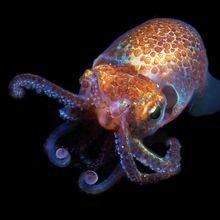
Symbiotic Organs: Extreme Intimacy with the Microbial World
Catherine Offord | Oct 3, 2022 | 10+ min read
All multicellular creatures interact with bacteria, but some have taken the relationship to another level with highly specialized structures that house, feed, and exploit the tiny organisms.

The Noncoding Regulators of the Brain
Christie Wilcox, PhD | Sep 12, 2022 | 10+ min read
Noncoding RNAs are proving to be critical players in the evolution of brain anatomy and cognitive complexity.
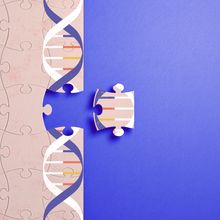
Large Scientific Collaborations Aim to Complete Human Genome
Brianna Chrisman and Jordan Eizenga | Sep 1, 2022 | 10+ min read
Thirty years out from the start of the Human Genome Project, researchers have finally finished sequencing the full 3 billion bases of a person’s genetic code. But even a complete reference genome has its shortcomings.

The Cerebellum’s Functions in Cognition, Emotion, and More
Diana Kwon | Aug 15, 2022 | 10+ min read
Once thought of as a mere motor coordination center, the “little brain” is now appreciated as participating in higher neurological processes.

The Misunderstood Proteins of Neurodegeneration
Catherine Offord | Aug 1, 2022 | 10+ min read
The normal functions of peptides that aggregate in Alzheimer’s, Parkinson’s, and Huntington’s have been largely overlooked by scientists, but some argue that they are critical for understanding the development of disease.

Are We in the Midst of a Sixth Mass Extinction?
Katarina Zimmer | Jul 18, 2022 | 10+ min read
Today’s extinction rates are sky-high. But scientists debate if that’s sufficient evidence to conclude that Earth is undergoing a mass extinction event—or whether that’s even a helpful designation.
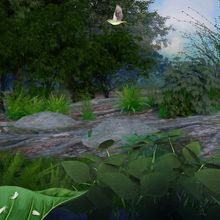
Horizontal Gene Transfer Happens More Often Than Anyone Thought
Christie Wilcox, PhD | Jul 5, 2022 | 10+ min read
DNA passed to and from all kinds of organisms, even across kingdoms, has helped shape the tree of life, to a large and undisputed degree in microbes and also unexpectedly in multicellular fungi, plants, and animals.

Opioid Vaccines as a Tool to Stem Overdose Deaths
Tori Rodriguez | Jun 13, 2022 | 10+ min read
Researchers are turning to the immune system for help in treating addiction and preventing overdose.

Animal Divorce: When and Why Pairs Break Up
Catherine Offord | Jun 1, 2022 | 10+ min read
Many species of birds and other vertebrates form pair bonds and mate with just one other individual for much of their lives. But the unions don’t always work out. Scientists want to know the underlying factors.
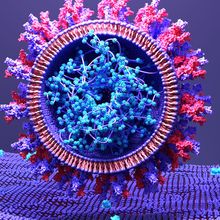
Viruses Target Super-Short Protein Motifs to Disrupt Host Biology
Conchita Fraguas Bringas and Jakob Nilsson | May 16, 2022 | 10+ min read
Only recently appreciated as critical components of cellular functions, unstructured stretches of amino acids called SLiMs are key to viral-host interactions.

New Evidence Complicates the Story of the Peopling of the Americas
Emma Yasinski | May 2, 2022 | 10+ min read
New techniques have shown that people reached the New World far earlier than the long-standing estimate of 13,000 years ago, but scientists still debate exactly when humans arrived on the continent—and how.

Is the Immune System to Blame for Schizophrenia?
Diana Kwon | Apr 18, 2022 | 10+ min read
Several lines of evidence suggest that targeting the body’s defense pathways might help treat a subset of people with the psychiatric disorder. But many open questions remain.

Does Human Epigenetic Inheritance Deserve a Closer Look?
Catherine Offord | Apr 4, 2022 | 10+ min read
The concept of epigenetic inheritance has long been controversial. Some researchers hope that new data on cross-generational effects of environmental exposures will help settle the debate.

Could Cancer’s Microbiome Help Diagnose and Treat the Disease?
Jef Akst | Mar 14, 2022 | 10+ min read
A growing appreciation of the bacterial assemblages that live within tumors has researchers striving to understand and capitalize on their role.

How Chaos in Chromosomes Helps Drive Cancer Spread
Samuel F. Bakhoum | Mar 1, 2022 | 10+ min read
A new link between inflammation and rampant chromosomal abnormalities reveals novel strategies to treat diverse malignancies.
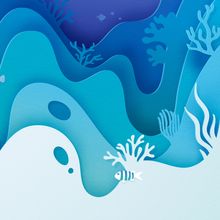
Environmental Memory: How Corals Are Adjusting to Warmer Waters
Amanda Heidt | Feb 14, 2022 | 10+ min read
Corals that previously experienced heat stress respond better the next time around. Researchers are trying to figure out how, and hope to one day take advantage of the phenomenon to improve coral restoration efforts.

Cell Chirality Offers Clues to the Mystery of Body Asymmetry
Catherine Offord | Feb 1, 2022 | 10+ min read
Researchers explore the idea that molecular patterns in individual cells could underlie the development of a left and a right in animals.

Adapting with a Little Help from Jumping Genes
Christie Wilcox, PhD | Jan 17, 2022 | 10+ min read
Long lambasted as junk DNA or genomic parasites, transposable elements turn out to be contributors to adaptation.

The Hunt for a Pandemic’s Origins
Martha Nelson | Jan 4, 2022 | 10+ min read
Dozens of researchers, including myself, worked for years to uncover that swine flu had leapt to humans from a pig in Mexico in 2009. We learned a lot about influenza evolution, pig farming, and outbreak risk along the way.
